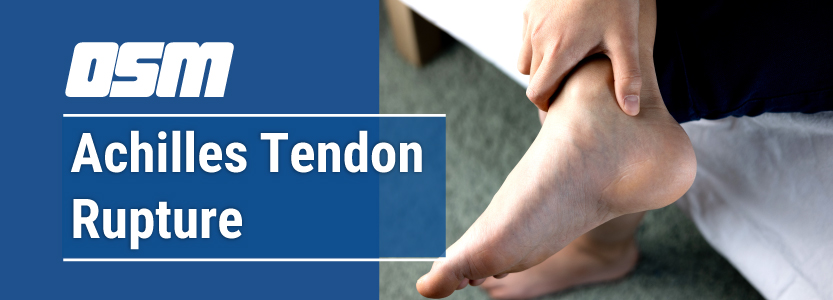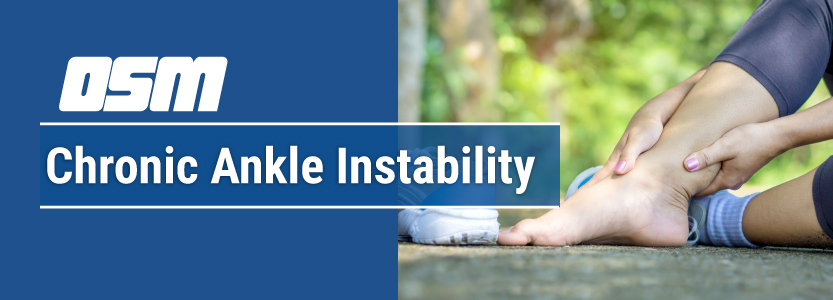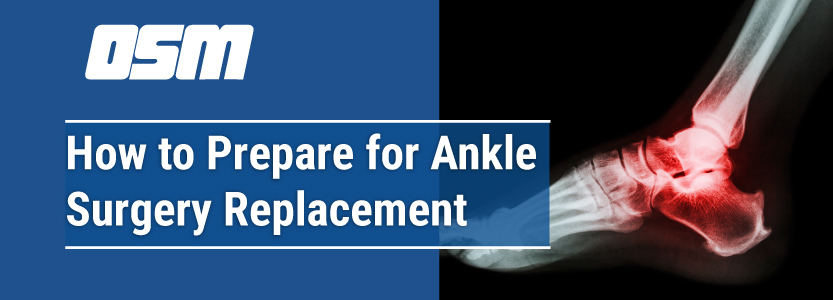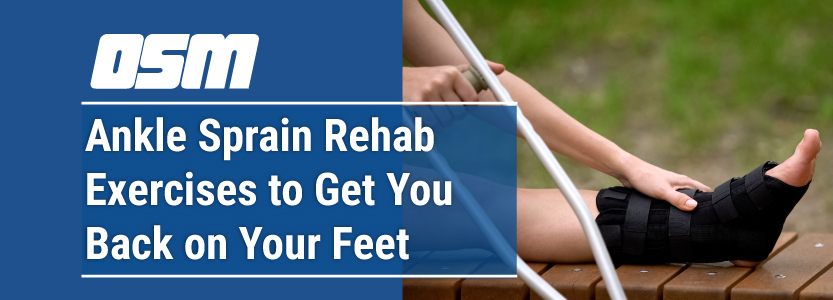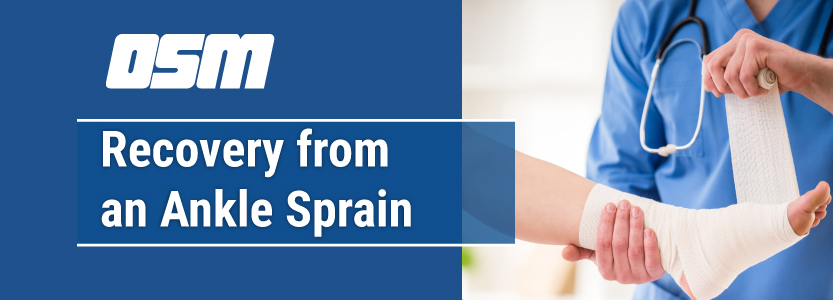Achilles Tendon Rupture
Article featured on Cleveland Clinic
The Achilles tendon is a thick band of tissue that attaches your calf muscle to your heel bone. It is the largest and longest tendon in your body and is built to handle a lot of stress. But you can rupture your Achilles tendon under extreme stress — like during a sudden start or stop, or if you fall. Sometimes it heals with rest and bracing, but many people need surgery to repair it.
What is an Achilles tendon rupture?
The Achilles tendon attaches the calf muscle to the heel bone. This thick band of tissue is very strong. In fact the Achilles tendon is the largest and strongest tendon in the body. The Achilles tendon gives your leg strength to walk, run and jump.
An Achilles tendon rupture is a full or partial tear of the Achilles tendon. This acute (sudden) injury occurs when the tendon stretches to its breaking point. It happens most frequently while playing sports. Tripping, falling or twisting your ankle can also cause an Achilles tear.
How common are ruptured Achilles tendons?
Achilles tendon ruptures are very common sports injuries. They occur most frequently in people ages 30 to 40 and are more common in men than in women.
People who are “weekend warriors” (usually adults who don’t train regularly, then exercise at a high intensity) are more likely to tear an Achilles tendon than younger, well-trained athletes.
Symptoms and Causes
What causes an Achilles tendon rupture?
Sudden movement that puts stress on the Achilles tendon can lead to a rupture. Typically, people tear the Achilles tendon while playing sports. The biggest culprits are sports with sudden stops, starts and pivots — such as soccer, football, basketball, tennis or squash. Achilles tendon tears aren’t always a sports injury. You can tear your Achilles tendon by tripping, missing a step when going downstairs or accidentally stepping into a hole and twisting your ankle. Some medications — including certain antibiotics and steroid injections in the area — can weaken the Achilles tendon. This can put you at a higher risk for a tear.
What are the symptoms of a torn Achilles tendon?
The classic sign of a ruptured Achilles tendon is feeling (and sometimes hearing) a pop or snap at the back of your ankle. People often mistakenly think something has hit them, but they’re actually feeling the tendon snap.
Other common symptoms include:
- Sharp, sudden pain in the back of the ankle near the heel.
- Swelling and bruising in the back of the ankle.
- Pain when walking, especially upstairs or uphill.
- Tenderness in the spot where the tendon is torn.
What are the complications of an Achilles tendon rupture?
A torn Achilles tendon is a traumatic injury that requires medical attention. Without treatment, an Achilles tendon rupture may not heal properly. This can increase your risk of rupturing it again.
Diagnosis and Tests
Your healthcare provider will physically examine your foot and ankle. They’ll check your ability to move it in various directions and see how you react to pressure on the area. They will also feel for a gap in the tendon that suggests it’s torn.
Your provider may also use imaging tests — such as ultrasound or MRI — to determine the extent of the Achilles tear.
Management and Treatment
How is a ruptured Achilles tendon treated?
Even before you seek medical help, you can reduce pain and swelling to the injured tendon by following the RICE (Rest, Ice, Compression, Elevation) method:
- Rest, by staying off the injured leg.
- Apply ice to the injured area.
- Wrap your ankle to compress the injured area and prevent more swelling.
- Elevate your leg at or above the level of your heart to reduce swelling.
Full healing of a torn Achilles tendon typically takes about four to six months. Medical treatment for a ruptured Achilles tendon may include:
- Brace or walking cast: Nonsurgical treatment for a torn Achilles tendon requires immobilizing the injured foot and ankle. Your provider will place your foot, ankle and calf in a brace or walking cast. Your foot and ankle flex downward so that the Achilles tendon can heal.
- Surgery: Most providers recommend surgical repair of a torn Achilles tendon in people who are active and middle-aged or younger. During surgery, a surgeon stitches the two ends of the torn tendon back together. After surgery, you’ll need a cast on your lower leg to immobilize the tendon while it heals.
- Physical therapy: You will need physical therapy to regain strength and mobility in your Achilles tendon, whether or not you had surgery.
Prevention
How can I prevent a torn Achilles tendon?
You can’t always prevent an accidental injury like tearing your Achilles tendon. But you can take steps to reduce the risk of an Achilles tendon rupture, including:
- Doing warmup exercises before a workout or game.
- Increasing the intensity of workouts gradually.
- Regularly stretching your calf muscles and Achilles tendons.
Outlook/Prognosis
What is the prognosis (outlook) for people with an Achilles tendon rupture?
With proper treatment, most Achilles tendon ruptures fully heal within four to six months.
Having surgery to repair a torn Achilles tendon is usually the best option for younger, active people. After surgical repair, you can regain your Achilles tendon’s full strength and function.
When should I call the doctor?
You should call your healthcare provider if you experience:
- A snap or pop at the back of your ankle during activity.
- Sudden sharp pain at the back of your ankle.
- Difficulty walking after an injury.
What questions should I ask my doctor?
You may want to ask your healthcare provider:
- Do I need surgery to repair my Achilles tendon?
- How long will I need to wear a brace or cast?
- When can I start exercising or playing sports again?
- Am I at risk of tearing my Achilles again after it heals?
The Orthopedic & Sports Medicine Center of Oregon is an award-winning, board-certified orthopedic group located in downtown Portland Oregon. We utilize both surgical and nonsurgical means to treat musculoskeletal trauma, spine diseases, foot and ankle conditions, sports injuries, degenerative diseases, infections, tumors and congenital disorders.
Our mission is to return our patients back to pain-free mobility and full strength as quickly and painlessly as possible using both surgical and non-surgical orthopedic procedures.
Our expert physicians provide leading-edge, comprehensive care in the diagnosis and treatment of orthopedic conditions, including total joint replacement and sports medicine. We apply the latest state-of-the-art techniques in order to return our patients to their active lifestyle.
If you’re looking for compassionate, expert orthopedic and podiatric surgeons in Portland Oregon, contact OSM today.
Phone:
Address
17355 Lower Boones Ferry Rd Suite 100A
Lake Oswego, OR 97035
Hours
Monday–Friday
8:00am – 4:30pm

